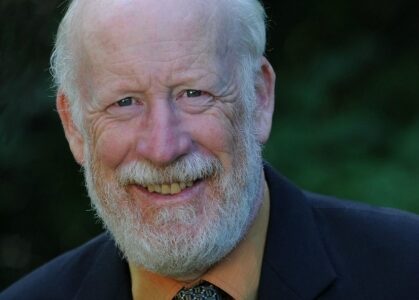EDITORIAL: Pooh-poohing poo-poo power
For over three years now, the Lower Columbia, Greater Trail, South Kootenay (or whatever the current branding of our region is) have been stuck in a much-reported sewer quagmire that has stalled the Liquid Waste Management Planning (LWMP) process at Phase one.
One would hope and expect that with notice given from the Province that secondary treatment will soon become the norm, putting the Waneta plant out of compliance and facing potential one million dollar a day fines until compliance is reached would be motivation enough to get back to the bargaining table. That hasn’t been the case thus far. Here are a few thoughts about the potential benefits that could be found through Phase Two.
For good reasons, sewers have historically been looked upon as a necessary expense. Over the past couple of decades, however, some forward-thinking scientists and municipalities have slowly been turning that belief on its head.
While many of the technologies are still in the testing phases, the potential does exist to generate revenue to subsidize the operation of sewage treatment plants and in some cases completely cover the operating costs and potentially generate surplus revenue from a former expense.
We’ve got a couple of things working in our favour, particularly on the Rossland to Trail run of the interceptor line. Simply put, water plus elevation change equals power generation capacity. A significant difficulty in our current setup(sending out sewage to Waneta before being processed) makes it difficult to place micro-hydro turbines into the interceptor line. Quite literally, raw sewage is a crappy environment in which to operate power-generating turbines.
But what if we processed, at least to a primary level, our sewage in Rossland first? What would the economics of that situation look like?
The formula for power generation is simple. Power = Head (elevation change) X Flow X Acceleration of Gravity (9.8 meters per second or 10 MPS, for simplicity’s sake).
While flow data (the most significant source of controversy in the sewer issue) is still sketchy, the Regional District has been working hard to get a handle on at least some ballpark flow figures from the three monitoring stations (just above Warfield, below Warfield and at the Waneta plant itself).
A rough estimate of 3.2 million cubic metres of sewage a year going into that plant gives us a good starting point. At this stage, a reasonable estimate based on the ongoing work of the Regional District places the flows from Rossland at roughly 15% of that amount give or take 10% depending on various circumstances.
The formula with real numbers: Head ( Roughly 400 metres from Lower Rossland to the Columbia River) X Flow ( roughly 20 litres per second over the course of a year from Rossland) X 10 = 80kw of power potential.
Based on the Liberals’ current deal for IPPs of 18 cents/Kwh, we could generate roughly $126,000 worth of electricty a year (or $6.3 million over a 50 year lifespan) assuming no population growth, water savings or power rate fluctuations in revenue generated from Rossland’s sewage. Not a huge amount, but something that could help offset the operating costs of such a system. If filtering stations were placed in Rossland and Warfield as potential ideas that micro-hydro generation revenue for the Rossland to Trail run jumps up closer to the $20 million dollar mark over a 50 year lifespan of the plant.
Now we’re getting significant as the estimated costs of a secondary treatment plant in Waneta are somewhere between the $30 to $50 million mark.
These of course are rough estimates based on available data and are meant not as answers but rather starting points for discussion.
Micro-hydro is the relatively easy solution, however. Another source of potential power is the gas generated from anaerobic activity created while treating sewage. As early as 1922, the City of Birmingham, England constructed a system that enabled them to operate a 20 horsepower power generation system from the off-gassing of the sewage. Arguably that’s a mighty small power generation system for a city of Birmingham’s size, but that fact that they could do it 80 years ago is impressive.
Since then there have been many advancements and different branches of this same basic idea of using the gasses generated for power generation or district heating systems.
A pilot project sewage plant in Ireland is currently ramping up production of a system they expect to not generate electricity but rather a treated gas that can be used as a replacement for natural gas and fed into the existing natural gas lines in the city. The initial project is expected to produce enough gas to heat roughly 5,000 homes.
Two of the main difficulties in holding back power from poop technology is cost and low efficiencies. The University of Oregon is currently working on a technology they expect will dramatically improve this efficiency by over 20 times the current best practices.
By coating graphite anodes with gold nanoparticles, Oregon State University engineers have been able to extract electricity in an electrochemical cell from raw sewage. The electricity is generated when bacteria found in sewage form a film over the anode, and as they break down waste, electrons are emitted. The electrons then flow as a current through the graphite towards a cathode outside of the cell.
Their initial estimates show that if this technology was used across the US they could not only run the sewage systems themselves but also provide 5% of the nation’s energy consumption.
“If animal, food industry and domestic wastewaters were combined together, they could provide roughly 500 trillion BTU’s of energy” said Penn State University environmental engineer Bruce Logan in an interview with Live Science. The United States currently uses about 100,000 trillion BTUs of energy every year.
These are but a few examples of the way that forward looking municipalities around the world are turning major expenses into new sources of revenue.
Could Rossland, Trail et al go down such progressive roads? In theory, sure we could, but until the current levels of parochialism and bickering between area politicians stops and they remember their raison d’être–to work for the common good–all of this is but a dream, a dream that as days pass and progress sits idle seems further and further away from reality.


























